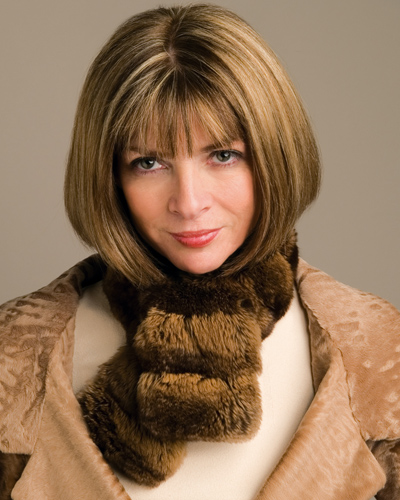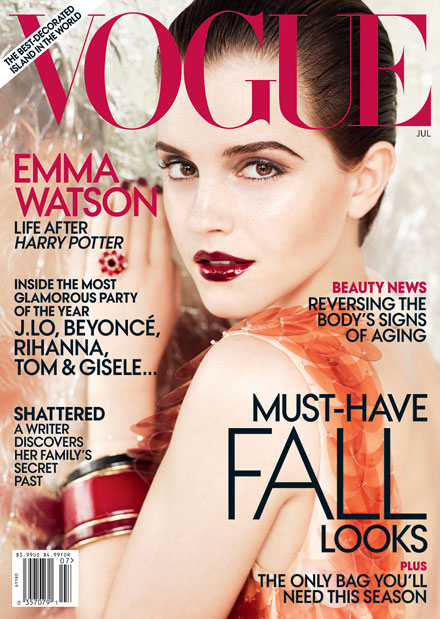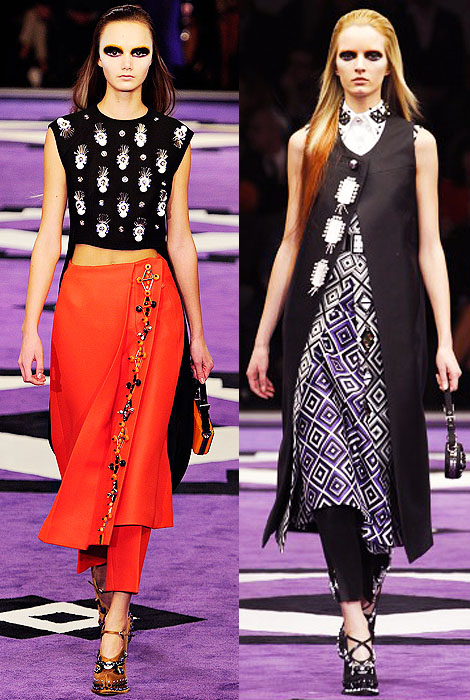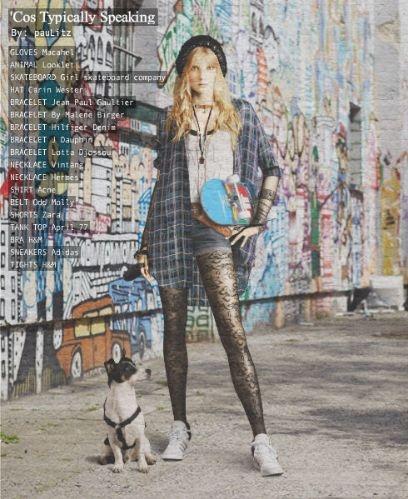
Anna was born November 3rd, 1949 in the U.K. Her Father Charles Wintour was an editor and her Stepmother Audrey Slaughter founded her own publications called honey and Petticoat, as well as being a Magazine editor. Anna Wintour’s great, great, great grandmother was a novelist of the 18th century named Lady Elizabeth Foster; The Duchess of Devonshire.
One of her younger brothers Patrick Wintour is a Journalist and is the political editor of The Guardian(According to Wikipedia)
Her older brother passed away in an accident when little and her other two siblings work for The London local Government.
Anna went to school at an Independent North London Collegiate School, where she was a rebel of the dress code’s given by taking up the hemlines of her skirt (According to Wikipedia)s. A rebellious act through dress code’s in school makes me understand how she comes from a writer’s background and how she also, as the new generation daughter of a family with a long history of writing was aiming towards Fashion and to eventually become the Editor-in-chief of American Vogue. Her early interests of Fashion began with watching the television and a show by Journalist and Broadcaster Cathy McGowan called Ready, Steady Go!, which was a Rock music show that focused on sex, music and fashion and it’s influence on teens. Her Grandmother lived in America, and would send her Issued of Seventeen Magazine(according to Wikipedia)
At the age of 15 she would date well-connected older men, which once again reminds me of how many good writer’s have been recognized of ?the way they date?. At her later teens she and a gossip columnist named Nigel Dempster became ?a fixture on the London club circuit?(according to Wikipedia), where I can imagine her trying on different outfit’s each time, alongside with the gossip columnist, and learning to see the critiques of Fashion as well as learning the language Fashion speaks to people outside the Fashion Industry.
When 15, she was given a job at a very famous London fashion store or Boutique called Biba by her father. At the same time, she took fashion classes and started attending Harrods; a high end department store in London, England, for a training program. She eventually gave up all the classes she attended and quoted: ?You either know Fashion or you don’t(according to Wikipedia).
An older boyfriend named Richard Neville; a ?self-described futurist and novelist?, and co-editor of a counterculture popular magazine called Oz, gave Anna her first experience in magazine production(according to Wikipedia).
Later on, she became the first editorial assistant of Harper’s & Queen, as she became a Fashion Journalist. Anna moved to New York with her boyfriend and freelance journalist Jon Bradshaw after being introduced with many photographers and even experiencing recreating the art of Manet and Renoir by using model’s in Go-Go boots, before her and her rival and the new editor Min Hogg got in to a ?chronic disagreement? which was the biggest cause of her early departure to work in New York City where she became the junior fashion editor at Harper’s Bazaar in 1975(according to Wikipedia).
Her innovative shoot’s eventually got her fired by editor Tony Mazzola and she was instead hired by Viva; a woman’s adult magazine with the help from Bradshaw, her boyfriend. At this point, Anna had her first personal assistant. In 1978 the Magazine got shut down, and Anna was dating record producer Michael Esteban at this time. In 1980 she met Elsa Klensch, the fashion editor of a new woman’s magazine called Savvy that spoke to ?career-conscious professional women who spent their own money?. Later that year Anna became a well known fashion editor of New York and she learned about celebrity photo’s and how important they were in the fashion world. Anna was one of the first to predict it becoming one of the best selling posts. A friend of Anna got her an interview with Vogue editor Grace Mirabella and Anna had seemed to admit she wanted Mirabella’s job, which didn’t help her getting any position at Vogue. It wasn’t until 1983 that she was offered a position as the creative director for Vogue from Alex Liberman; editorial director for Conde Nast and publisher of Vogue, where she still had her rebellious senses in her and made changed to the Magazine without Mirabella’s knowledge and ?causing friction? in the staff(according to Wikipedia)
At this time she dated child psychologist David Shaffer, whom she knew from London and they married in 1984. A year later, she became editor of British Vogue after Beatrix Miller who retired. She was named ?Nuclear Wintour? by her staff since she changed a lot around.
When returning to New York and taking over House & Garden, and she made sure the rival Architectural Digest wouldn?t be a problem anymore, after adding in so much fashion, skillfully enough to new named House & Garment. In exact she canceled photo spreads and articles worth $2 million dollars her first week. The changes were so drastic and the readers didn’t recognize the magazine anymore after being shortened to just HG. Ten months later she finally became the editor of Vogue, under Mirabella. During this time, Elle was recently introduced to the fashion world and Vogue was focusing a lot on lifestyle as a whole and less on fashion(according to Wikipedia).
Her first changed to the cover of Vogue was her showing ?how real women put their clothes together?, and the model was wearing $50 dollar jeans and a $10.000 dollar bejeweled T-shirt, designed by Christian Lacroix. The Model herself looked very natural in regards of make-up and styling.
Kate Betts was hired by Anna and she challenged her by writing about women in politics, the street-culture and financial difficulties of some major designers. Betts was paired up with Plum Sykes; Fashion writer and novelist of New York Socialite, which Betts complained is an ?air head?, and Betts left the company. Sykes also left to focus on screenplay’s and novels short after. All editors that left did achieve their goals in writing, and Wintour formed a new staff(according to Wikipedia).
Soon she became editor of the year, after publishing far more popular than Elle’s version of additional magazines; Teen Vogue, Men’s Vogue and Vogue Living. Queen Elizabeth II appointed Wintour Officer of the Order of the British Empire in the 2008 birthday honors(according to Wikipedia).
Being blamed of evocation of Racial Stereotyping from cover imagine of LeBron James and Gisele Bundchen, feathers in the Milan show and the worsened economy gave Wintour a tougher challenge. Vogue men got cut back to two issues a year and Vogue living was suspended(according to Wikipedia).
In 2009 Wintour appeared on 60 minutes, speaking about how the economy affected fashion and in 2010 The American Society of magazine’s elected her to their Hall of Fame. In New York, Wintour was now known as the ?unofficial mayoress?. She encouraged Fashion designer Christian Dior to hire new designers such as John Galliano. Ultimately, she is known to be one of the largest fashion icons. Another famous act was when she Persuaded Donald Trump to use his ballroom at The Plaza Hotel for a Marc Jacob’s show. Her former Employee Lauren Weisberger wrote, along with Richard Story, The Devil wears Prada after Wintour suggested her a writing workshop.
Anna Wintour’s salary was notified to be $2 million USD a year(according to Wikipedia).
Her office is known to be ?intimidating?, as you need to walk very far to get to her personal desk. Other than her intimidation, she is known to have been criticized a lot for standing by her fashion values and by working, also learning how to make fashion a success and an interest for people to read and watch. She quoted: ?If I ever come off as cold, it is only because I?m striving towards the best?. In this case, I believe her as she has proven to not fail herself, nor her employees and their future as writers.
I believe her and her work is nothing but successful and looking at her life, I don?t believe there is any challenge she didn?t concur, even if it shocked the audience at once. Either way, people seem to have expected the best of her and knew there is a lot in her as an editor to challenge her and claim she either shocks the audience or that she now is making it all too predictable.
In regards to women readers, she was also called a feminist. An example of why is when there was a started piece about a stewardess with breast cancer, and how she went to find a high-flying business woman with cancer for the spread, and usually excluded ordinary working women from Vogue.
In any career, the necessity of finding information on so many different levels of understanding is not applicable or needed. Being a writer or becoming a writer has so much dept to it that it can take a lifetime for many natural born writers to find their ?niche? in writing or even how to spot it and create it. Anna Wintour is one of the most revolutionary editors of our time and is sure to be trusted based on the experiences we know she has been through, the people she met/knew and the effort she made to reach her title ? Editor-in-chief of American Vogue.

by: Aileen N.
07/11/11


